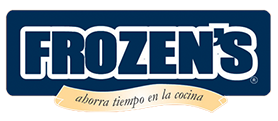Freezing, What is it? Clues
Freezing is a process where food is exposed to minimal temperatures reaching -18 ºC in the least possible time. In this process, natural decomposition is stopped, preserving the food’s nutritious values and flavours intact. Frost formation must be prevented, as crystal accumulation may damage solid particles, especially meat fibres. At defrosting, if there is ice, some alterations may be noticed in food flavour and texture.
All kinds of food can be frozen, except lettuce, fresh uncooked tomatoes, radish, uncooked potatoes, uncooked and boiled eggs, mayonnaise, yoghurt, and uncooked green vegetables, which must be blanched before freezing.
Blanching is cooking vegetables in boiling water no longer than 3 minutes followed by their immersion in frozen water for approximately 5 minutes.
It is recommended that red meat is frozen by previously removing fat and bones whenever possible. Poultry must be cleaned with entrails separately wrapped. Fish must be frozen with no scales or entrails.
If frozen and then defrosted fish was bought, it is necessary to cook it before freezing again. Sea food must be frozen without shell and cleaned. Potatoes must be cooked first.
Fruits can be frozen with or without seed, cooked or uncooked. It is suitable to boil very watery fruits before freezing. Dairy products (except yoghurt), pasta and pastries can be frozen cooked or uncooked with sauces or preparations.
Heavy cream must be whipped before freezing.
Always remember that a good packaging guarantees food preservation and freshness for longer periods.
